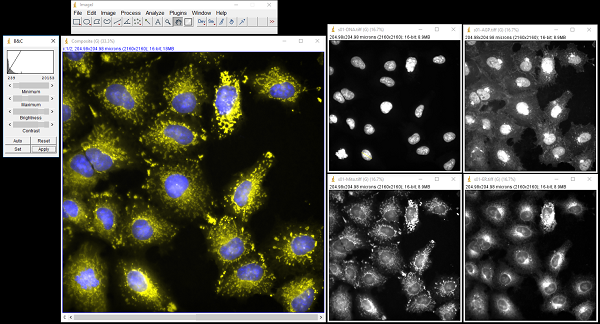Bioimage Informatics Activity
By David Julian

Module Description:
In this two-part module, students use basic bioimage informatics techniques to acquire quantitative data from images of cultured cells, and then use these data to test a hypothesis about the effect of a genetic mutation on cellular phenotypes. Together, the two activities are designed to model an authentic research project that uses modern bioimage informatics techniques.
In the first part of the module, students analyze fluorescence emission images of cultured cells to determine the appearance, characteristics, and dimensions of some cellular features, and then create a composite, color image. In the second part of the module, students use image analysis to count and measure the nuclei of control cells and cells with a mutation in a proto-oncogene, and then use a t-test to test for statistical significance.
Teaching Setting:
The module is intended for students in a college-level general biology course, but is also suitable for a cell biology course. Each part takes about two hours and is intended to be performed in a computer lab (or any classroom or laboratory in which students have access to computers), but it may be feasible for students to perform the exercise at home using a personal computer. The required software is freely and publicly available, and can be installed and run on a computer running Windows, Mac OS, or Linux, or can be launched directly in a browser from the ImageJ Software page on QUBES. Students may work individually or in pairs.
Citation:
Julian, D. (2018). Bioimage Informatics Activity. HHMI BioInteractive FMN (2016), QUBES Educational Resources. doi:10.25334/Q49M6M
|